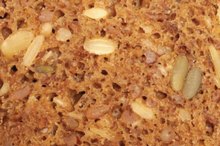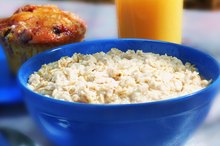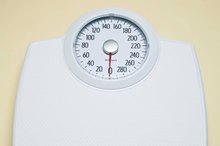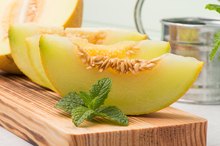What does fact checked mean?
At Healthfully, we strive to deliver objective content that is accurate and up-to-date. Our team periodically reviews articles in order to ensure content quality. The sources cited below consist of evidence from peer-reviewed journals, prominent medical organizations, academic associations, and government data.
The information contained on this site is for informational purposes only, and should not be used as a substitute for the advice of a professional health care provider. Please check with the appropriate physician regarding health questions and concerns. Although we strive to deliver accurate and up-to-date information, no guarantee to that effect is made.
Does Oatmeal Turn Into Starch?
Oatmeal makes a comforting, satisfying and nutritious breakfast. Oatmeal is rich in carbohydrates, especially starches, and constitutes a quick source of energy 3. Choose an oatmeal with larger flakes for a more sustained release of energy over a few hours, and avoid flavored packets that are loaded with added sugar.
Oatmeal and Starches
Starches are part of the total carbohydrate content of a food. Although they are usually not listed on food labels, you can estimate the starch content of any food by subtracting the sugar and fiber content from the total carbohydrate content. The sum of sugar, fiber and starches is equal to the total carbs per serving. The food label of old-fashioned oats indicates that a 1/2 cup of dry oats contains 27 g of total carbohydrates, 4 g of total fiber, of which 2 g are soluble and 2 g are insoluble, as well as 1 g of sugar 3. This means a serving provides a total of 22 g of starches.
- Starches are part of the total carbohydrate content of a food.
- Although they are usually not listed on food labels, you can estimate the starch content of any food by subtracting the sugar and fiber content from the total carbohydrate content.
Digestion of Starches
List of Slow-Release Carbohydrate Foods
Learn More
Oatmeal does not "turn into" starch, because it is already mostly starch. In a serving of 1/2 cup of dry old-fashioned oats, 22 g of the 27 g of total carbohydrates are starches 3. Starches correspond to a chain of glucose, or sugar, linked together. During the digestion process, enzymes called amylase in your digestive system cleave the bond between the molecule of glucose, which turns starches into sugar. Oatmeal is starch and it is converted to glucose, or sugar, during the digestion process.
- Oatmeal does not "turn into" starch, because it is already mostly starch.
- Oatmeal is starch and it is converted to glucose, or sugar, during the digestion process.
Oatmeal and Blood Sugar Levels
Any food containing carbohydrates, including oatmeal, can elevate your blood sugar levels in the hours following your meal 3. Most carbohydrates, with the exception of fiber, turn into sugar 3. After the starch is broken down into sugar, this sugar is absorbed into your bloodstream, raising your blood sugar levels. The more oatmeal and the more carbohydrates you eat, the higher your blood sugar levels will rise 3. Oatmeal prepared from two packets of maple and brown sugar, which contains 64 g of carbohydrates, will raise your blood sugar levels significantly more compared to a bowl of oatmeal prepared with 1/2 cup of dry old-fashioned oatmeal, which contain 27 g of carbohydrates 3.
Add Protein and Fiber
Which Foods & Vegetables Contain Starch?
Learn More
Although you can't prevent starches from being converted to sugar, you can prevent your blood sugar levels from spiking after eating carbohydrates and oatmeal by adding fiber and protein to your meal 3. Fiber and protein delay the digestion process and make the conversion of starches to sugar more slow and gradual, helping to stabilize your blood sugar levels until the next meal. You can add protein and fiber to your bowl of oatmeal by adding fruit, nuts, yogurt and other healthy toppings.
Related Articles
References
Writer Bio
Aglaee Jacob is a registered dietitian. She has experience working with people who have diabetes, cardiovascular disease, hypertension and obesity issues. Jacob obtained a bachelor of science and a master of science, both in nutrition, from Laval University in Quebec City, Canada.









